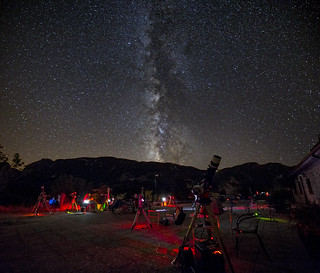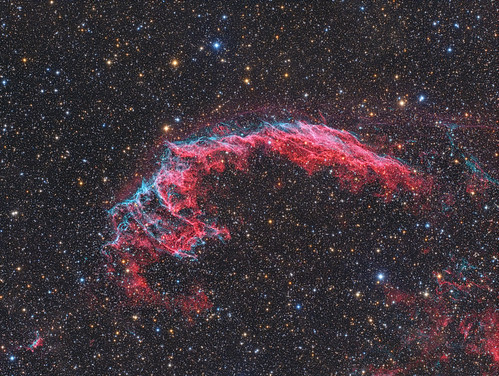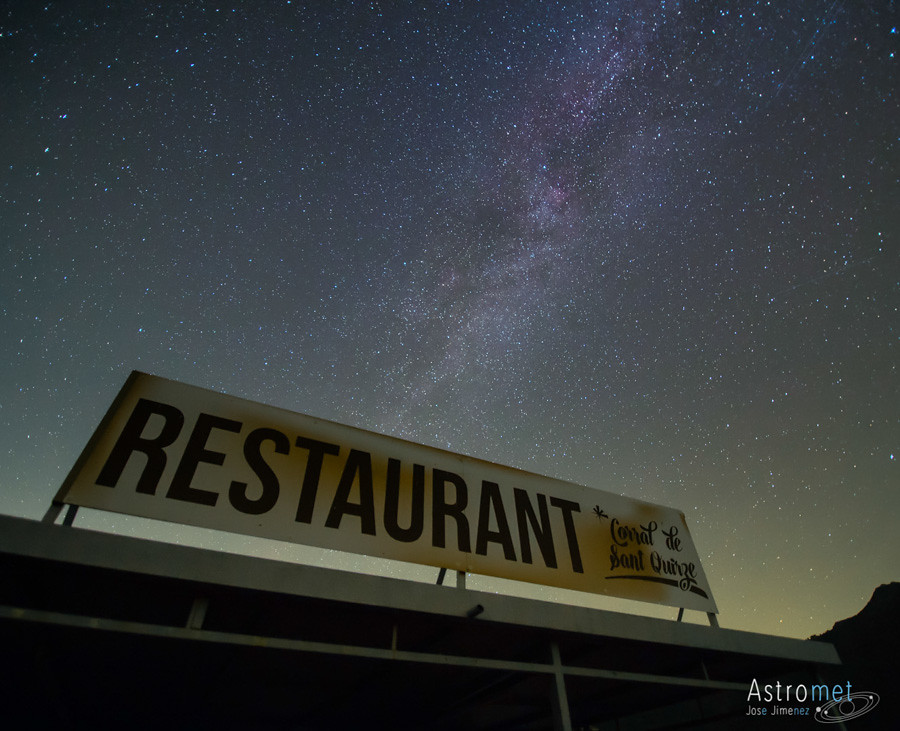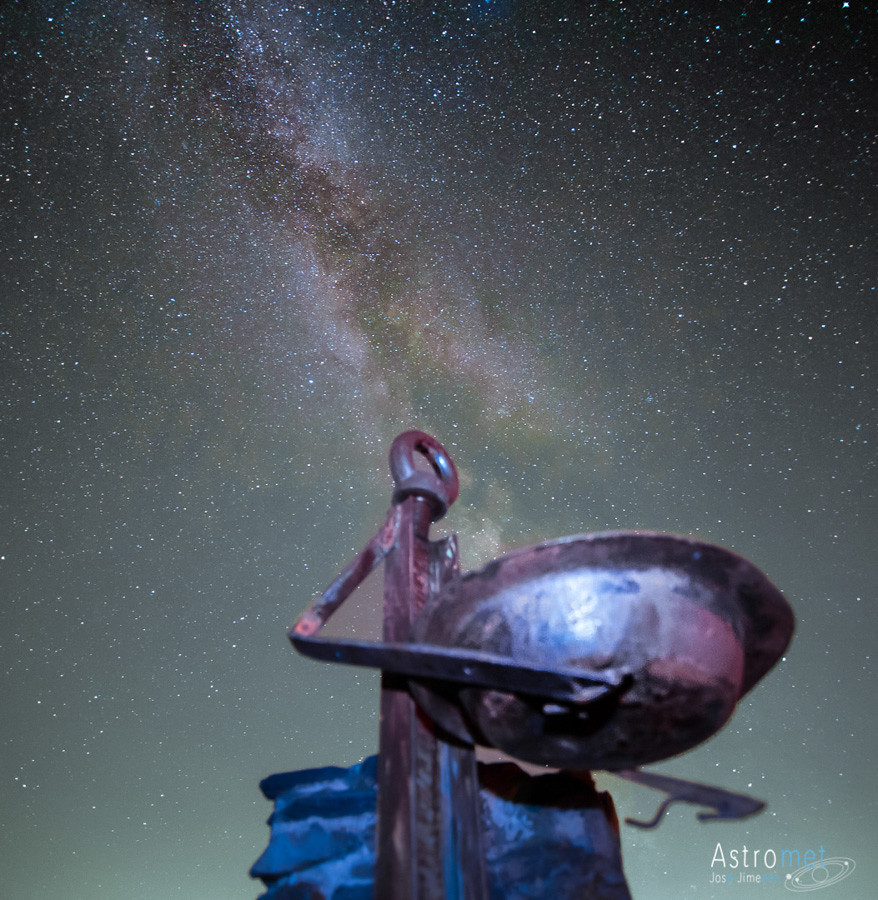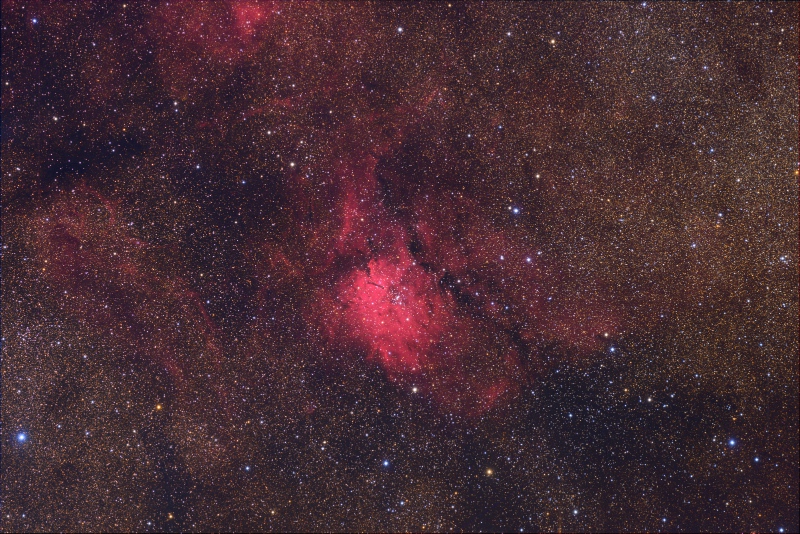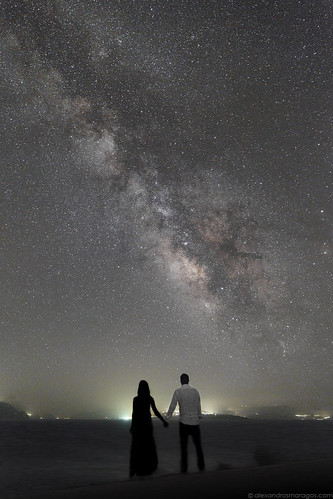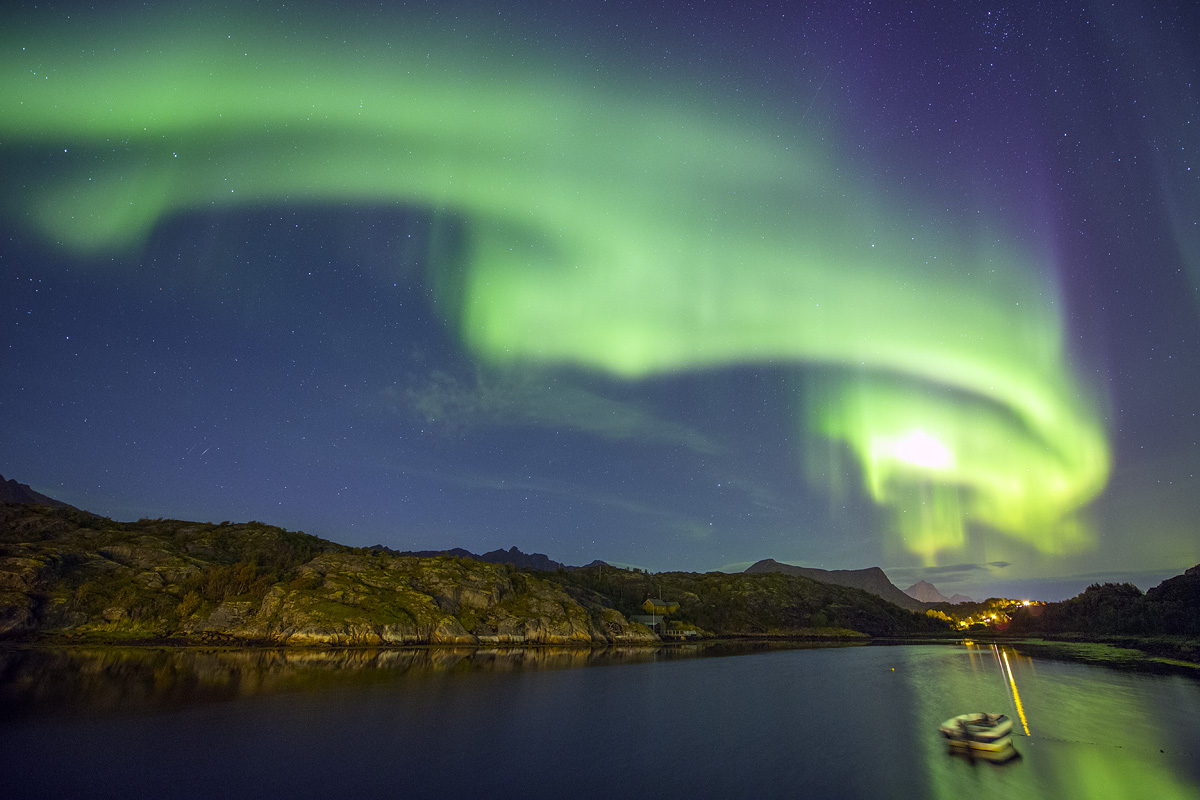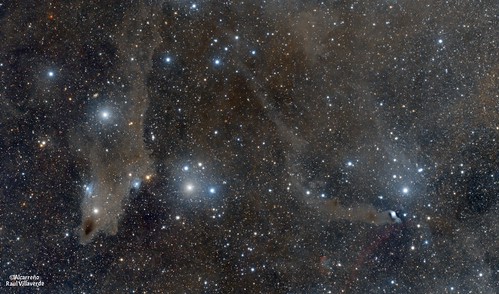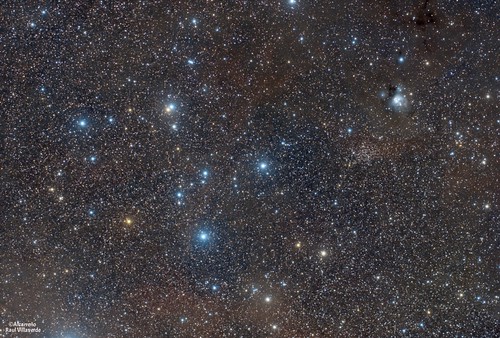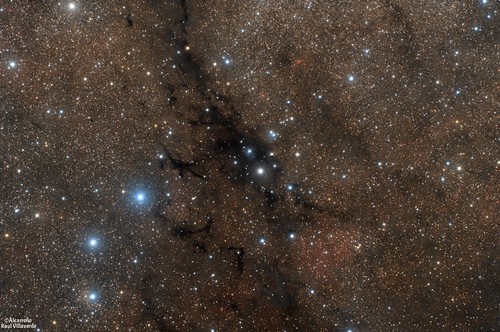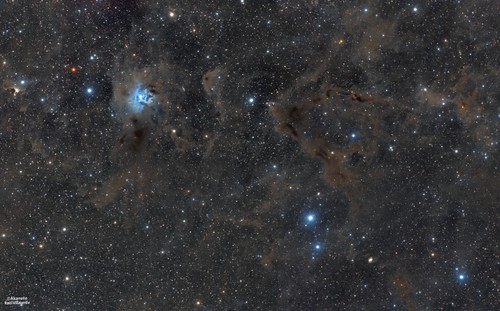Into the constellation of Sagittarius - Milkyway
From the 10th National Annual Star Party of Greek Amateur Astronomers at mountain Parnon.
Special thanks to the Astronomical Union of Sparta!
text wikipedia
https://en.wikipedia.org/wiki/Sagittari ... tellation)
Sagittarius is one of the constellations of the zodiac. It is one of the 48 constellations listed by the 2nd-century astronomer Ptolemy and remains one of the 88 modern constellations. Its name is Latin for the archer, and its symbol is Sagittarius.svg (Unicode U+2650

), a stylized arrow. Sagittarius is commonly represented as a centaur pulling-back a bow. It lies between Scorpius and Ophiuchus to the west and Capricornus to the east.
The center of the Milky Way lies in the westernmost part of Sagittarius.
As seen from the northern hemisphere, the constellation's brighter stars form an easily recognizable asterism known as 'the Teapot'. The stars δ Sgr (Kaus Media), ε Sgr (Kaus Australis), ζ Sgr (Ascella), and φ Sgr form the body of the pot; λ Sgr (Kaus Borealis) is the point of the lid; γ2 Sgr (Alnasl) is the tip of the spout; and σ Sgr (Nunki) and τ Sgr the handle. These same stars originally formed the bow and arrow of Sagittarius.
Marking the bottom of the teapot's "handle" (or the shoulder area of the archer, are the bright star (2.59 magnitude) Zeta Sagittarii (ζ Sgr), named Ascella, and the fainter Tau Sagittarii (τ Sgr).
To complete the teapot metaphor, under good conditions, a particularly dense area of the Milky Way can be seen rising in a north-westerly arc above the spout, like a puff of steam rising from a boiling kettle.
The Milky Way is at its densest near Sagittarius, as this is where the galactic center lies. As a result, Sagittarius contains many star clusters and nebulae.
Nebulae
Sagittarius contains several well-known nebulae, including the Lagoon Nebula (Messier 8), near λ Sagittarii; the Omega Nebula (Messier 17), also known as the Horseshoe Nebula or Swan Nebula, near the border with Scutum; and the Trifid Nebula (Messier 20), a large nebula containing some very young, hot stars.
The Lagoon Nebula (M8) is an emission nebula that is located 5,000 light-years from Earth and measures 140 light-years by 60 light-years (1.5°). Though it appears grey in telescopes to the unaided eye, long-exposure photographs reveal its pink hue, common to emission nebulae.[8] It is fairly bright, with an integrated magnitude of 3.0. The Lagoon Nebula was discovered independently by John Flamsteed in 1680, Guillaume Le Gentil in 1747, and Charles Messier in 1764. The central area of the Lagoon Nebula is also known as the Hourglass Nebula, so named for its distinctive shape.
The Hourglass Nebula has its shape because of matter propelled by Herschel 36. The Lagoon Nebula also features three dark nebulae catalogued in Barnard's Catalog. The Lagoon Nebula was instrumental in the discovery of Bok globules, as Bart Bok studied prints of the nebula intensively in 1947. Approximately 17,000 Bok globules were discovered in the nebula nine years later as a part of the Palomar Sky Survey; studies later showed that Bok's hypothesis that the globules held protostars was correct.
The Omega Nebula is a fairly bright nebula; it has an integrated magnitude of 6.0 and is 4890 light-years from Earth. It was discovered in 1746 by Philippe Loys de Chésaux; observers since him have differed greatly in how they view the nebula, hence its myriad of names. Most often viewed as a checkmark, it was seen as a swan by George F. Chambers in 1889, a loon by Roy Bishop, and as a curl of smoke by Camille Flammarion.
The Trifid Nebula (M20, NGC 6514) is an emission nebula in Sagittarius that lies less than two degrees from the Lagoon Nebula. Discovered by French comet-hunter Charles Messier, it is located between 2,000 and 9,000 light-years from Earth and has a diameter of approximately 50 light-years. The outside of the Trifid Nebula is a bluish reflection nebula; the interior is pink with two dark bands that divide it into three areas, sometimes called "lobes". Hydrogen in the nebula is ionized, creating its characteristic color, by a central triple star, which formed in the intersection of the two dark bands. M20 is associated with a cluster that has a magnitude of 6.3.
The Red Spider Nebula (NGC 6537) is a planetary nebula located at a distance of about 4000 light-years from Earth.
NGC 6559 is a star forming region located at a distance of about 5000 light-years from Earth, in the constellation of Sagittarius, showing both emission (red) and reflection (bluish) regions.
The grouping of the Lagoon Nebula, the Trifid Nebula, and NGC 6559 is often called the Sagittarius triplet.
In addition, several other nebulae have been located within Sagittarius and are of interest to astronomers.
M24, also called the Small Sagittarius Star Cloud, is a star cluster with an approximate magnitude of 3. About 9400 light-years away, it has a diameter of approximately 330 light-years. Embedded in M24 is NGC 6603, a smaller star cluster that is very dense. NGC 6567, a dim planetary nebula, and Barnard 92, a Bok globule, are also nearby.
NGC 6445 is a planetary nebula with an approximate magnitude of 11. A large nebula at over one arcminute in diameter, it appears very close to the globular cluster NGC 6440.
NGC 6638 is a dimmer globular at magnitude 9.2, though it is more distant than M71 at a distance of 26,000 light-years. It is a Shapley class VI cluster; the classification means that it has intermediate concentration at its core. It is approximately a degree away from the brighter globulars M22 and M28; NGC 6638 is southeast and southwest of the clusters respectively.
Canon eos 6D, EF 85 f1.2 LII, 85mm, f/2.8, iso800, 6X3min, Skywatcher EQ6, Unguide, DSS, PS

